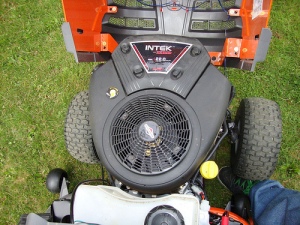Seized Up Lawn Mower Engine?
Heading out to cut the spring grass and your lawn mower engine seized up? Don’t fear, I’m going to walk you through some simple ways to fix it so it’s back up and running in no time!
Why in the world did my engine seize up on the first place!?
If your engine seized up it’s probably because you haven’t touched your lawn mower in a long time! Another possibility is that the oil too low. The most common reason lawn mower engines seize up is due to a lack of lube which causes the internal components to oxidize. If you want to learn more about lube, check out another article I wrote on engine lubrication.
So how do I fix this problem?
The first thing you should do is buy a can of penetrating oil spray and drain the engine of all of its oil and fuel. Penetrating oil spray can be purchased at your local dealer or at any of the major brand websites (Briggs Parts, Honda Parts, Kohler Parts, or Kawasaki Parts), or even smaller parts sites like Jack’s Small Engines.
After that you should remove the spark plug from the lawn mower engine. IMPORTANT: Make sure you follow the instructions in your manual for this part!
You are going to want to then adjust the push mower engine so that the spark plug hole is facing up.
Next, be sure to spray the penetrating oil all over and in the spark plug hole. You’ll want to let the oil set in the combustion chamber for about an hour.
Now it’s time to strap on a pair of work gloves as you’ll have to manually move the engine’s piston down the bore with your hands. Grip the mower blade and gently move it back and forth. You’ll want to continue this until the engine rotates freely. If it’s working correctly, the blade and crankshaft should rotate together.
Now simply re-install the spark plug and then fill your small engine with the appropriate type and amount of oil. Once it has enough oil you can go ahead and fill it with fuel!
By now, your lawn more engine should start and your small engine should no longer be seizing up. It’s a good idea to let it run for several minutes before shutting off, now.
I’ve done all that and my engine IS STILL SEIZED UP!
If the steps I’ve listed above do not work, this probably is a good indication that your engine’s parts are far too oxidized to be fixed by penetrating oil and you’ll probably have to replace them. You’ll have to stop into a dealer or search online for the right parts to get your mower back up and running smoothly.


